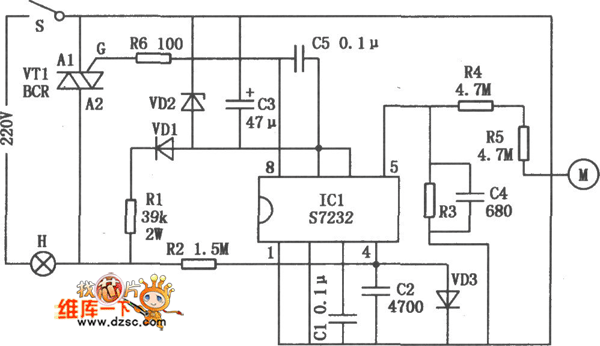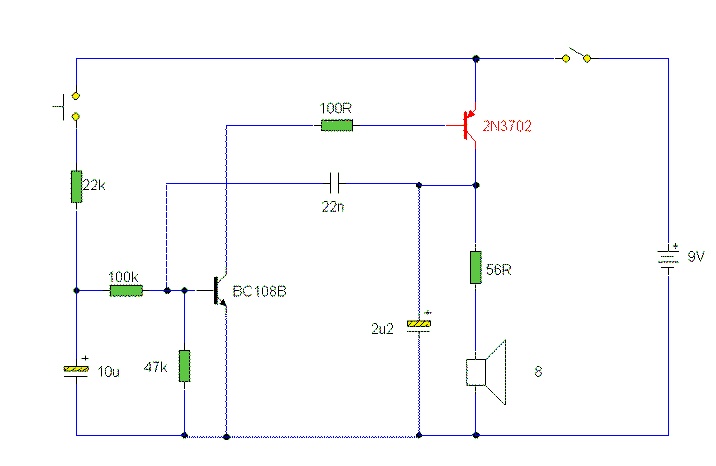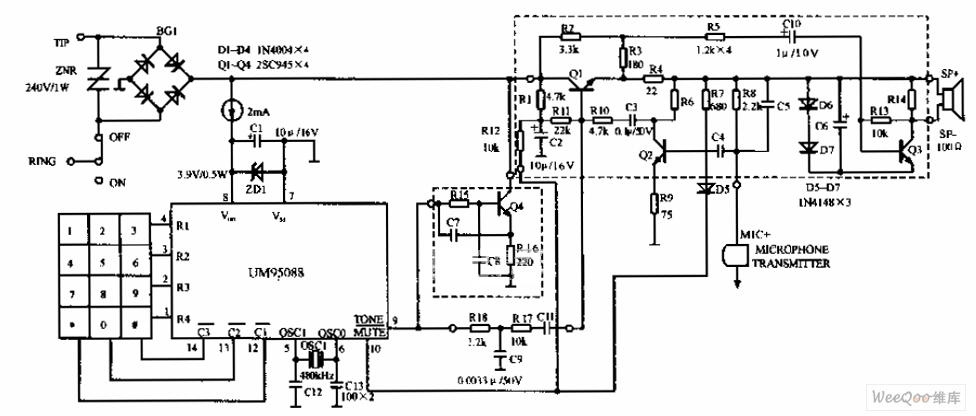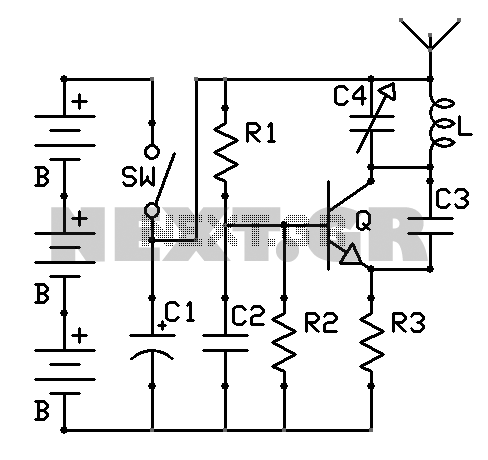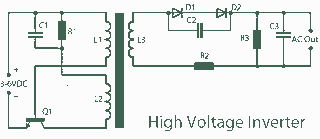
Two-Tone Siren Circuit Schematic Using One IC

Two-Tone Siren Circuit Schematic Using One IC. This circuit is designed for children's entertainment and can be installed on bicycles, battery-powered cars, motorcycles, as well as models and various games and toys. It includes a switch (SW1) for operation.
The Two-Tone Siren Circuit utilizes a single integrated circuit (IC) to generate two distinct audio tones, providing an engaging sound effect suitable for various applications. The circuit typically consists of a 555 timer IC configured in astable mode, which allows it to produce a square wave output. The frequency of this output can be adjusted using resistors and capacitors connected to the timer.
Key components of the circuit include:
1. **555 Timer IC**: This is the core component responsible for generating the two-tone sound. The frequency of oscillation can be modified by changing the values of the resistors (R1, R2) and the capacitor (C1) connected to the timer.
2. **Resistors and Capacitors**: These components determine the frequency of the tones produced. By using a combination of resistors and capacitors, the circuit can create a pleasing sound pattern that alternates between two different frequencies.
3. **Speaker**: A small speaker or piezo buzzer is connected to the output of the 555 timer. This component converts the electrical signals from the IC into audible sound.
4. **Power Supply**: The circuit is powered by a battery, making it suitable for mobile applications. A typical voltage range would be between 3V to 9V, depending on the specifications of the components used.
5. **Switch (SW1)**: This component allows users to turn the circuit on and off, providing control over the sound output.
The circuit is compact and can be easily integrated into various devices such as toys, models, and small vehicles. The design is user-friendly, allowing for simple assembly and modification. The playful sound generated by the siren can enhance the enjoyment of children while being used in recreational activities.Two-Tone Siren Circuit Schematic Using One IC Circuit This circuit is intended for children fun, and can be installed on bicycles, battery powered cars and motorcycles, but also on models and various games and toys. With SW1 pos.. 🔗 External reference
The Two-Tone Siren Circuit utilizes a single integrated circuit (IC) to generate two distinct audio tones, providing an engaging sound effect suitable for various applications. The circuit typically consists of a 555 timer IC configured in astable mode, which allows it to produce a square wave output. The frequency of this output can be adjusted using resistors and capacitors connected to the timer.
Key components of the circuit include:
1. **555 Timer IC**: This is the core component responsible for generating the two-tone sound. The frequency of oscillation can be modified by changing the values of the resistors (R1, R2) and the capacitor (C1) connected to the timer.
2. **Resistors and Capacitors**: These components determine the frequency of the tones produced. By using a combination of resistors and capacitors, the circuit can create a pleasing sound pattern that alternates between two different frequencies.
3. **Speaker**: A small speaker or piezo buzzer is connected to the output of the 555 timer. This component converts the electrical signals from the IC into audible sound.
4. **Power Supply**: The circuit is powered by a battery, making it suitable for mobile applications. A typical voltage range would be between 3V to 9V, depending on the specifications of the components used.
5. **Switch (SW1)**: This component allows users to turn the circuit on and off, providing control over the sound output.
The circuit is compact and can be easily integrated into various devices such as toys, models, and small vehicles. The design is user-friendly, allowing for simple assembly and modification. The playful sound generated by the siren can enhance the enjoyment of children while being used in recreational activities.Two-Tone Siren Circuit Schematic Using One IC Circuit This circuit is intended for children fun, and can be installed on bicycles, battery powered cars and motorcycles, but also on models and various games and toys. With SW1 pos.. 🔗 External reference
